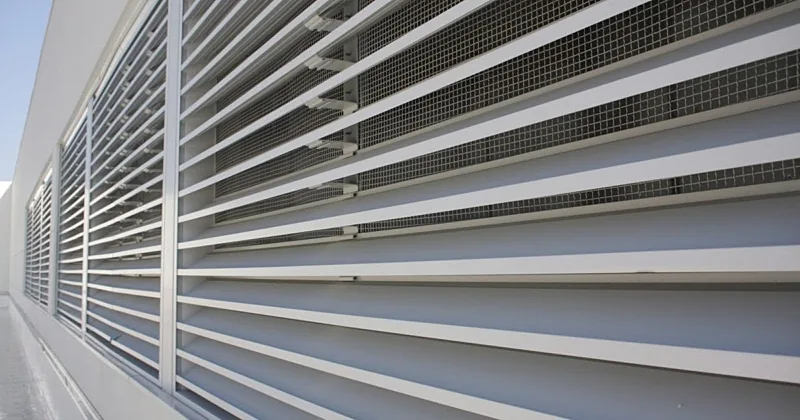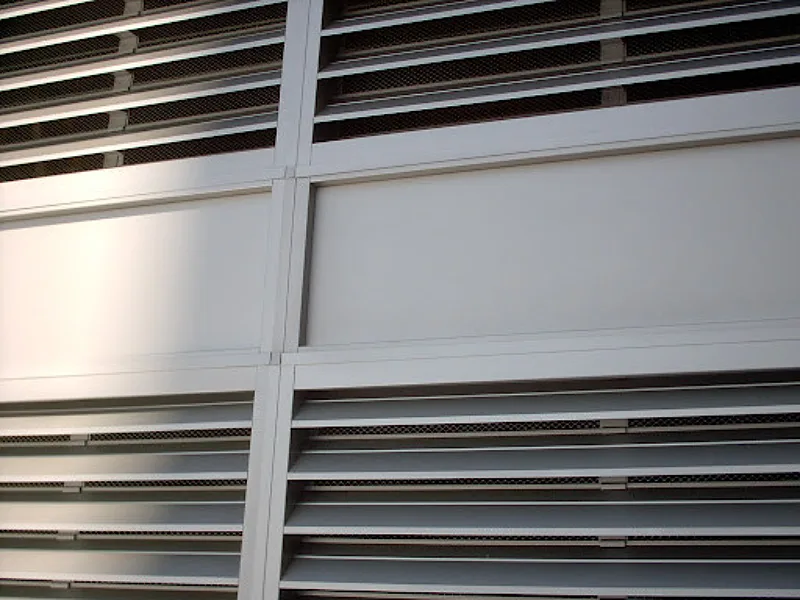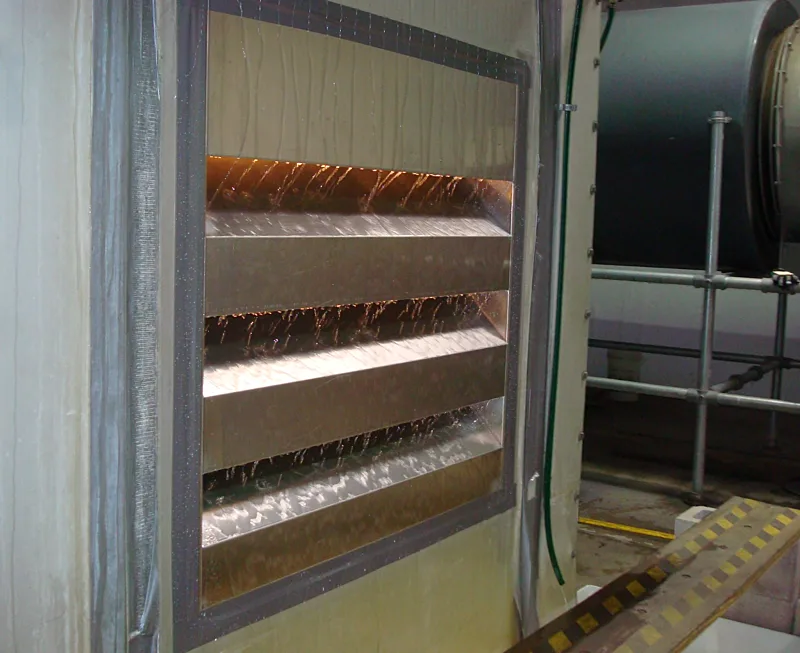Finding the right balance between energy use and airflow is critical to building a sound HVAC or exhaust system — that is where louvers come in handy. No building is complete without them, but it’s important to know that the way they are designed and installed dictates how well they will function.
What Is Free Area?
The free area is the minimum area that air can pass through a louver. It is simply the total opening area that is unobstructed by blades and frame. Typically, higher free area will mean enhanced airflow, but it also allows for greater penetration of rainwater and debris.

How to Calculate Free Area
To calculate the free area, take the total open area (remove all obstructions, blade, and frame from the equation), and divide that figure by the area of the overall wall opening. This will give you a comparison of the louvered opening to the wall opening.
Free areas commonly range from 35% to 60% of the wall opening.
Typically, a bigger percentage is better since more air can enter through smaller wall openings, potentially reducing the overall costs. However, this has to be balanced against the water penetration that a higher free area likely brings. A well designed louver will maximize free area, while minimizing water penetration.
How Other Louver Factors Can Impact Free Area Performance
It is important to remember that free areas differ by size, shape, screens, and the model of the louver used. These factors can have a considerable impact on the free area you get, so make sure you consider all of the factors when selecting the louvers for your building.
Orientation
A louver that is 4 ft wide by 8 ft high may not have the same free area as a louver that is 8ft wide by 4 ft high.
Size
Also, the smaller your louver becomes, the greater the space taken up by the louver frame, thus reducing your louver free area percentage. Most people assume that free area is fixed, regardless of size; however, a 1ft by 1ft louver will have a lower free area percentage than an 8ft x 8ft louver, as the frame takes up a smaller total area of the opening.
Model
Every louver model will have different blade shapes and spacing, varying the free area for a given size of louver.

Why Is Free Area Important?
Free area has an impact on how your louver functions in the field. It is best to go for the greatest possible free area, while keeping the beginning point of water penetration below your system max. To be more precise, the free area of a louver is:
The open space between a louvered area’s blades
The open space between the head of a louver and its highest blade
The open space between a louver's sill and its lowest edge
Water Flow and Penetration
Typically, louvers with a higher free area will have a lower point of water penetration. However, the louver type makes a difference. Louvers can be non-drainable or drainable. A drainable unit incorporates gutters in every blade to enable additional water to accumulate. The water flows into downspouts and then out the bottom of the louver, at the sill. Drainable louvers have higher beginning points of water penetration than a non drainable louver. This means that you can select a louver with a smaller free area.

Pressure and Velocity
A lower pressure drop is beneficial for good airflow, as air can easily pass through a louver with little resistance. As a louver reduces in size, the free area velocity will increase for a fixed airflow, meaning higher water penetration and higher pressure drop.
How Free Area Impacts the Purpose of Louvers
The key is to understand where your louver will go and the purpose it is going to serve. If the louver will not be fully exposed to the elements, water penetration may not be the primary concern. Perhaps your louver can perform well with a smaller free area with a higher water penetration point. It is imperative to find the best possible balance for your specific project.
For help selecting the best louver for your projects, contact us today. We would love to answer all your questions so you can make an informed decision about the best way to optimize your HVAC or exhaust system.




